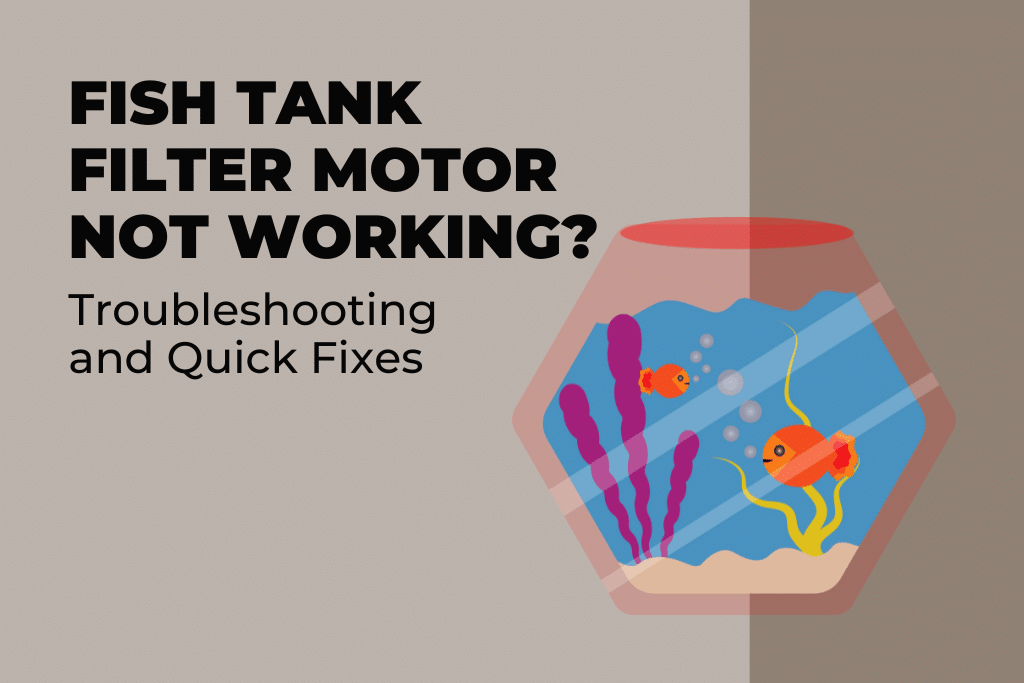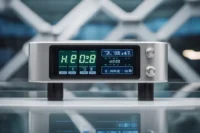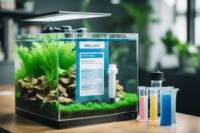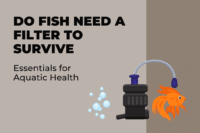When an aquarium’s life support system falters, understanding the intricacies of a fish tank filter motor becomes paramount. A non-operational filter motor can herald a myriad of issues within a delicately balanced aquatic ecosystem. Fish keepers may observe signs ranging from weakened water flow to silence where there once was a humming motor, both indicative of potential filter failure. Timely addressing these symptoms not only ensures the well-being of the fish but also prevents long-term damage to the filtration system.
Aquarium enthusiasts know that a functioning filter is central to the health of any aquatic environment, removing debris and toxic substances from the water. Recognizing the signs of a malfunctioning filter motor can be as straightforward as noticing a lack of suction or an unresponsive unit that refuses to power on. In such cases, before considering the replacement of the entire unit, steps towards troubleshooting can be a cost-effective approach. Routine maintenance is vital, and understanding when and how to undertake this can save both time and money, while also preserving the equilibrium of the tank’s inhabitants.
Key Takeaways
- Filter motor issues can disrupt tank balance.
- Identifying symptoms is crucial for timely intervention.
- Regular maintenance prevents common motor problems.
Identifying Common Fish Tank Filter Motor Issues
When a fish tank filter is not functioning correctly, it is often due to problems with the motor. The heart of the filter, the motor, may experience various issues that can impede water filtration. Here are some common complications.
- Clogged Impeller: Debris can accumulate and block the impeller, a component crucial for the filter’s operation. If the flow rate diminishes or stops, a clog is likely. To troubleshoot, inspect the impeller for debris and clean as necessary.
- Power Source: Ensure the filter is plugged in correctly. Faulty cable connections or issues with the power outlet can prevent the filter from receiving power.
- Electrical Issues: Fish tank filters are prone to malfunction after power surges or outages. Checking the filter following such events is important to verify if it needs resetting or repair.
In cases where there’s a disruption in power or unusual noise, a deeper examination of the motor setup is warranted. Regular maintenance, such as cleaning the impeller and checking the electrical connectivity, can prevent many common issues. If problems persist after these checks, it may be necessary to consult the manufacturer’s guidelines or seek professional assistance.
Troubleshooting Fish Tank Filter Motor
When addressing issues with a fish tank filter motor not working, it’s essential to meticulously assess electrical connections, inspect the impeller and its housing, and evaluate the mechanics governing water flow and suction. Proper troubleshooting can often restore filter functionality without the need for professional repairs.
Inspecting Electrical Connections
Firstly, one must ensure that all connective cables are properly plugged in and that the power source is functioning. It’s not uncommon for cables to become loose or disconnected. A simple inspection of the power cord, plug, and outlet can sometimes solve the motor’s issues. If the power source is secure and the motor still fails to operate, this might indicate an internal electrical problem.
Examining the Impeller and Housing
The impeller is the heart of the filter motor. One should remove the impeller from the shaft and examine it for any visible signs of damage or obstruction. The housing should also be checked for debris that could hinder the impeller’s rotation. Using a screwdriver, individuals can gently test if the impeller magnet properly engages and spins freely within its housing.
Assessing Water Flow and Suction
Lastly, assessing water flow and suction can reveal issues with the filter’s ability to circulate water. A significant loss of suction may point to blockages in the intake tube or other components restricting water flow. Clearing any obstructions from these areas is critical for restoring proper function to the filter system. If no suction is present, the motor or impeller may require replacement.
Cleaning and Maintenance of Fish Tank Filters
Proper cleaning and maintenance of fish tank filters are crucial to ensure their efficiency in maintaining clean water for healthy aquarium life. Regularly scheduled care prevents clogs and ensures that filter media operates effectively, providing both mechanical and biological filtration.
Routine Filter Care
Fish tank filters require regular checks to ensure they function optimally. It’s recommended that aquarium owners inspect their filters at least once a month. When inspecting, debris and waste should be removed from the sponge and other parts of the filter. This can involve rinsing the sponge in aquarium maintenance water, as tap water may contain chlorine that can harm beneficial bacteria.
- Weekly: Check for abnormal noise or vibrations.
- Monthly: Rinse filter sponges in discarded tank water.
- Bi-annually: Replace parts like filter sponge if worn out.
Dealing with a Clogged Filter
When a filter becomes clogged, its performance is significantly reduced or might cease altogether. A clogged filter can typically be identified by reduced water flow or an unusually quiet operation. To rectify this issue, one can take apart the filter assembly to remove any clog of dirt obstructing the impeller‘s movement. For persistent clogs, replacing the impeller or the entire motor might be necessary, as outlined by Pet Fish Tank.
- First Step: Unplug and disassemble to access the impeller.
- Next: Clean impeller and surrounding area from dirt and debris.
Optimizing Filter Media
The strategic layering of filter media within the filter casing is essential for effective filtration. Biological filtration is enhanced by ensuring that the filter media like bio-rings and sponges are clean and adequately positioned to host beneficial bacteria. However, they should not be replaced altogether unless completely worn out, to preserve the colonies of beneficial bacteria vital for aquarium maintenance.
- Mechanical: Place foam/sponge first to catch larger waste particles.
- Biological: Add bio-rings or similar media behind the foam layer for bacteria colonization.
- Chemical (if used): Place at the final stage to remove dissolved impurities.
Understanding Filtration and Aquarium Health
Effective filtration is vital for maintaining a healthy aquarium. It is not merely about keeping the water clear; it also involves sustaining a stable environment where fish can thrive. Filtration systems are tasked with removing physical waste, neutralizing harmful chemicals, and supporting the nitrogen cycle by housing beneficial bacteria.
Types of Filtration:
- Mechanical Filtration: This process involves physically removing debris from the water, typically through materials like sponge filters.
- Biological Filtration: Crucial for breaking down toxins like ammonia and nitrite, biological filtration happens when beneficial bacteria convert these harmful chemicals as part of the nitrogen cycle.
- Chemical Filtration: This uses activated carbon or other media to remove various dissolved pollutants from the water, helping to maintain water chemistry.
Importance of a Fish Tank Filter:
A fish tank filter is essential in oxygenating the water and facilitating the transfer of gases, which keeps the tank inhabitants healthy. Without adequate filtration, toxins can accumulate, leading to a hazardous environment for aquatic life.
Aquarium Health and Filter Choice:
Selecting the right type of filter, whether it’s internal filters or sponge filters, depends on the tank size, the species housed, and the bioload present. It is important to ensure that the chosen filtration system can handle the specific requirements of the aquarium. Regular maintenance of the filters is also crucial to prevent issues that could impair water quality and, consequently, the health of the tank inhabitants.
Advanced Repair and Replacement Options
When a filter motor breaks or malfunctions, aquarium enthusiasts face the decision between repairing the existing unit and opting for a replacement. This section delves into the intricacies of when to replace the filter motor and how to select a suitable new filter, ensuring the health and clarity of your aquarium.
When to Replace Filter Motor
Broken motor signs: If the filter motor is no longer responding to basic troubleshooting steps such as priming or removing an air lock, it may be broken beyond repair. A motor that emits unusual noises, overheats, or fails to start even after cleaning and inspection likely requires replacement. Additionally, if a filter is beyond its warranty period and repair costs exceed the value of the motor, replacement is the logical choice.
Filter malfunction symptoms: Aquariums relying on motors with an adjustable flow rate may suffer if the motor fails to adjust the rate as needed, leading to an imbalanced aquatic environment. Furthermore, consider replacement if the filter consistently fails to achieve proper water clarity or if priming processes, even for self-priming models, no longer yield results.
Selecting the Right Filter for Your Aquarium
Filter types: The primary choices include canister filters and hang-on-back (HOB) filters. Canister filters are recommended for larger tanks due to their powerful filtering capabilities, whereas HOB filters are suitable for smaller to medium-sized aquariums.
Considerations: When selecting a new filter, consider the aquarium’s size and the specific needs of its inhabitants. Look for models with strong reviews, reliable warranty terms, and necessary features like self-priming and adjustable flow rate. For those with heavily stocked tanks or sensitive species, an option with an integrated air pump may enhance oxygenation and filtration effectiveness.
Table 1: Filter Comparison
| Filter Type | Best For | Features | Typical Warranty |
|---|---|---|---|
| Canister Filters | Large aquariums | Powerful, customizable | 1-5 years |
| Hang-On-Back | Smaller aquariums | Easy installation, compact | 6 months-3 years |
Choose a filter from a reputable brand with established positive customer feedback. Confirm that the filter capacity aligns with your tank size to maintain a clean and healthy aquarium environment.
Preventive Measures and Best Practices
Maintaining an efficient aquarium involves several key preventive measures and best practices that ensure the optimal functioning of fish tank filters. Here are some tips to safeguard against filter malfunctions:
1. Routine Maintenance:
- Clean Intake Grates: Regularly check and clean the intake grates to prevent clogging by organic waste, which can impair the filter’s ability to pump water effectively.
- Impeller Checks: Ensure the impeller is free of debris; a clogged impeller can stop the filter from pumping water and compromise water quality.
2. Optimal Flow Rate:
- Adjustable Flow Rate: Utilize filters with an adjustable flow rate to ensure they meet the specific needs of your aquarium, balancing aeration and circulation.
3. Water Quality Monitoring:
- Test Regularly: Regularly test water for ammonia, nitrite, and nitrate levels to detect any imbalances that could indicate a problem with the filter’s performance.
4. Aeration Enhancement:
- Supplemental Air Pump: Consider a supplemental air pump to enhance aeration, especially in tanks with densely stocked fish populations or where water circulation is an issue.
5. Preventive Check-ups:
- Regular Inspections: Conduct periodic inspections to solve any issues before they escalate. This includes listening for unusual sounds that might indicate a malfunctioning motor or pump.
By implementing these practices, they can help in preventing issues that could lead to filter malfunctions, providing a stable environment for aquatic life and maintaining the desired water quality within the aquarium.










